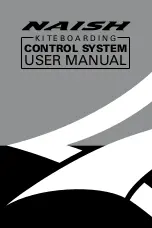
1.
Remove inspection plates and panels.
2.
Inspect surfaces, skins and tips for damage, loose rivets and corrosion.
3.
Inspect trim tab hinges and attachments for wear, security and corrosion.
4.
5.
Inspect all rod end bearings for freedom of ball movement. Use a 10X magnifying glass to check thread
end of bearing for cracks and damage. Replace bearing if ball is frozen or hard to move.
6.
Inspect aileron balance weight and arm for security and condition (located outboard of aileron).
7.
8.
Inspect flap time delay switch operation per Piper Service Manual, Section V.
9.
Inspect condition flap track bolts and aileron hinge bolts for wear and security.
10. Inspect all control surface exterior bearings for wear, freedom of movement and corrosion.
11. Remove aileron and inspect area beneath inboard hinge on aileron spar for cracks. (Refer to latest revi-
sion of Piper Service Bulletin No. 974.)
12. Inspect bolts for stripe alignment.(Piper Service Manual, Section IV).
13. Inspect wing attachment brackets and splice plate for cracks and corrosion (Piper Service Manual, Section
14. Inspect engine mount attachments for security.
15. Inspect fuel cells and lines for leaks and water (Piper Service Manual, Section IX).
16. Check fuel tanks for proper placards, fuel cap7s for proper seal and quick drains for proper operation.
17. Check fuel tanks marked for correct operating fuel.
18. Inspect fuel vents for blockage and damage.
19. Inspect tip tank for damage, attachment and leaks.
20. Remove and inspect forward and aft tip tank cone for presence of water and face of tip tank surfaces for
presence of corrosion.
21. Inspect condition of pneumatic deicer boots for damage and operation (if applicable).
22. Inspect wing tip navigation and strobe lights for broken lenses and operation; replace bulb or flash tube as
required.
23. Lubricate as per Piper Service Manual (Section II).
24. Install inspection plates and panels.
1.
Remove and inspect spinner and back plate for security and corrosion.
2.
Inspect blades for nicks, cracks and corrosion.
3.
Check for excessive grease and oil leaks.
4.
Check condition of propeller deicer boots.
1.
Remove engine cowl.
2.
Remove, drain and clean fuel filter bowl and element (drain at least every ninety (90) days).
3.
Check for proper oil level and filler locking cap for security.
4.
Inspect oil temperature sender unit for leaks and security (located on engine accessory case).
5.
Inspect and clean oil radiator cooling fins.
6.
Remove air inlet screen, inspect first stage compressor blades for ingestion damage and corrosion. Inspect
screen for damage and cleanliness and reinstall.
Interim Revision: October 26, 1994
Page 31
❐
❐
❐
❐
❐
❐
❐
❐
❐
❐
❐
❐
❐
❐
❐
❐
❐
❐
❐
❐
❐
❐
❐
❐
❐
❐
❐
❐
❐
❐
❐
❐
❐
❐
SERIAL NUMBER
REGISTRATION NUMBER
ENGINE SERIAL NO.
Left:
Right:
PROPELLER SERIAL NO.
Left:
Right:
CHEYENNE
PA-31T AND 31T1
PROGRESSIVE INSPECTION
50 HOUR EVENTS
EVENT #3
RIGHT PROPELLER, ROUTINE
RIGHT ENGINE, ROUTINE
RIGHT WING, DETAILED
Содержание CHEYENNE PA-31T
Страница 42: ......
Страница 53: ...53 REISSUED 12 16 83...
Страница 56: ...56...
Страница 57: ...I I I I i I...
Страница 58: ...REISSUED 12 16 83 58...
Страница 59: ...I I q q I REISSUED 12 16 83...
Страница 60: ...I I i i i t z P E i z 3 i i REISSUED 12 16 83 60...
Страница 61: ...61 REISSUED 12 16 83...
Страница 62: ...REISSUED 12 16 83 62...
Страница 63: ......
















































